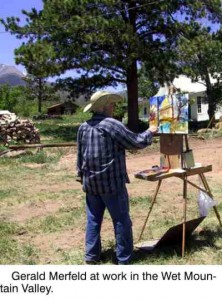Review by Virginia McConnell Simmons
Biography – September 2007 – Colorado Central Magazine
Thomas F. Walsh: Progressive Businessman and Colorado Mining Tycoon
by John Stewart
Published in 2007 by the University Press of Colorado
ISBN 0870818708
VISITORS TO COLORADO’S HIGH COUNTRY cannot fail to hear about its legendary mines and about the legendary millions made from them. Visitors to Ouray especially cannot fail to hear about the nearby Camp Bird Mine and about the legendary Hope Diamond, the bauble bought by Evalyn Walsh McLean, the daughter of Thomas F. Walsh who made millions from the Camp Bird. What usually is missing in these stories is adequate information about the mining tycoon Walsh. Consequently, this biography will be a welcome addition to shelves devoted to Colorado history.
Walsh’s portrait on the dust jacket shows a mature, handsome, slim Irishman with chin up and eyes confident, as well they might be, rather than a paunchy, hirsute walrus like so many moguls of the period. His genealogy and early life in Ireland and his emigration to America open the biography. Later in the book, a reader may suspect that Walsh’s progressive treatment of laborers at the Camp Bird might have been a reflection of his upbringing as a youth in Ireland. In contrast to the labor conflicts that took place in other mining camps at the turn of the century, Walsh’s miners did not unionize nor strike, because they were already working eight-hour days for three dollars a day, which is what the unions were demanding from less benevolent mine owners elsewhere.
THE AUTHOR, John Stewart, discusses the popular story that Walsh missed his first opportunity to strike it rich in the Black Hills by turning down half interest in what soon became the great Homestake Mine. Earlier Walsh had tried his hand in Colorado as a carpenter before becoming interested in mining. After his time in the Black Hills he went to Leadville, and worked on the west side of Tennessee Park, but he lost out when the price of silver dropped in 1893. He also owned the early-day Grand Hotel. After Leadville, Walsh mined at Cripple Creek and Creede and then the San Juans.
Walsh’s greatest achievement at Leadville appears to have been his marriage to Carrie Bell Reed, a capable woman who rose with him to high society in Washington and Newport.
For some readers, smelting may be less colorful than life stories or mining bonanzas, but an essential part of the Camp Bird saga is Walsh’s interest in smelting processes, which began with a long-term partner at Kokomo, north of Frémont Pass, and continued later in the San Juans. The often-told account that is repeated by Stewart reports that the search for flux for the smelter at Silverton resulted in the discovery of the rich ore in the Imogene Basin and the development of the Camp Bird Mine by the sagacious Walsh. My summary here is a regrettable oversimplification of these events, which Stewart fully describes. Walsh had already made millions when he sold the mine to British investors for cash and stock, afterward making more millions.
Regardless of his humanitarian impulses among miners, Walsh would demonstrate a remarkable lack of discrimination as a millionaire in choosing some individuals for his friends, although he never lost his knack for managing money with a sharp eye. Most notable among his ill-chosen friends was King Leopold II of Belgium, notorious for his exploitation of human and natural resources in the Congo. Stewart devotes more space to Leopold than he seems to warrant in a biography about Walsh, Of greater interest is Walsh’s friendship with Teddy Roosevelt and support of irrigation projects such as the Gunnison River tunnel near Montrose.
Not surprisingly, gossip gets enough words. The well-known foibles of daughter Evalyn and her collection of fabulous jewels receive more than adequate attention from Stewart, and descriptions of Walsh’s country estate, Wolhurst, south of Denver and his enormous mansion in Washington will undoubtedly fascinate readers. Stewart also reveals the machinations of Walsh’s widow to avoid paying inheritance tax in Colorado, as well as an insult that had caused a furious Walsh to turn his own back on the state.
IN CONTRAST, a shortcoming is the need for more information about Walsh’s career, his associates in smelting and mining, and his ambiguous politics. Ute Indians and Otto Mears are disposed of in a cursory manner. Transportation, especially railroading, is side-tracked. Many readers may also long for a description of the town of Ouray and the magnificent San Juans that were the backdrop for Walsh’s activities and the mine that produced his millions.
John Stewart, an attorney in Denver, first undertook this account as a paper for a history class and next as an M.A. thesis before it became a book of 230 pages, probably with many changes suggested by advisors along the way. It provides a long-needed introduction to the life of Thomas F. Walsh. With another 200 pages and improved narrative focus, it could become a rousing epic tale. Walsh merits one.

